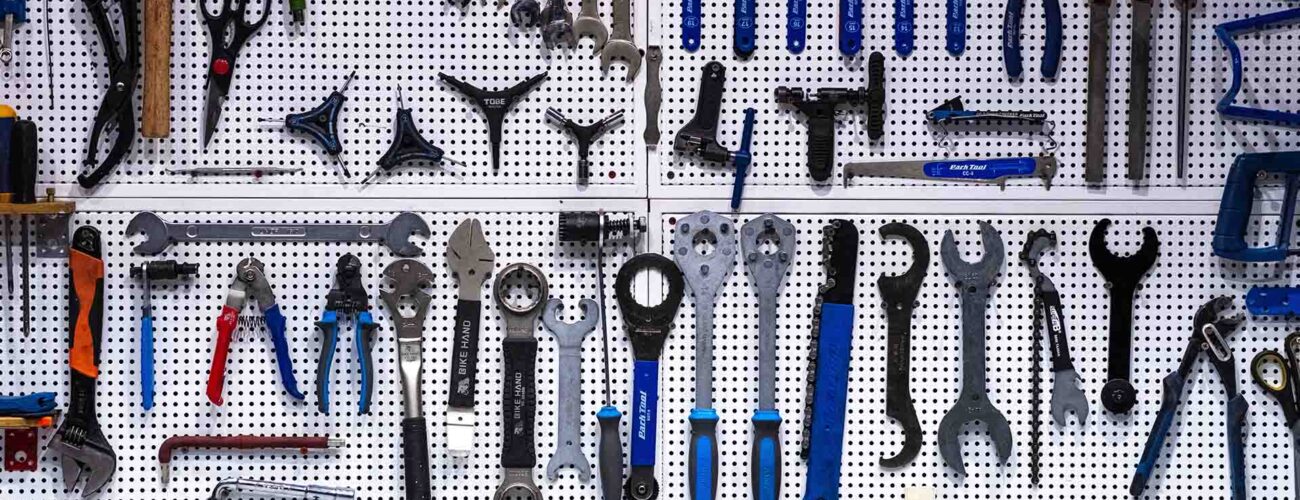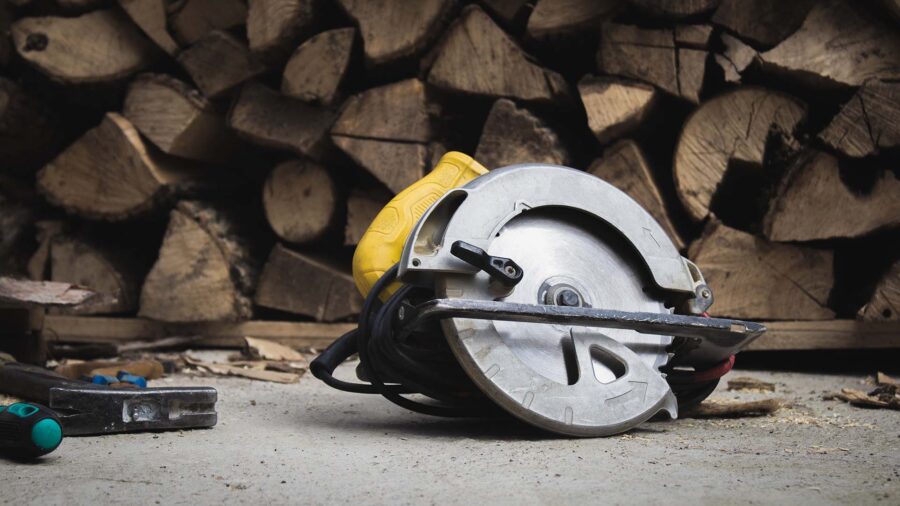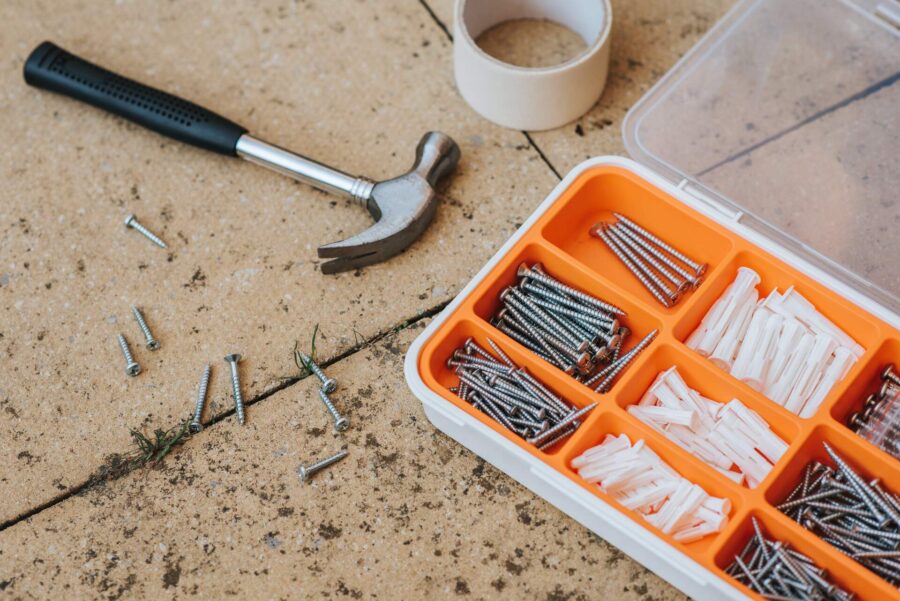

7 Tips and Tricks for Packing Tools When Moving Across the Country
Posted in Moving Essentials,Moving Tips & Tricks on September 25, 2023
Relocating across the country presents unique challenges, especially when it comes to packing tools in your prized toolkit. With the proper boxing-up techniques, ensuring their safety and organization becomes a breeze. Dive into our essential tips and tricks to make your relocation smooth and your equipment ready for action at your future destination.
How to pack tools for moving? Start by taking a comprehensive inventory and gathering enough supplies to pack the equipment. Organize and categorize the collection, group similar objects, and keep small accessories with their respective instruments. Wrap everything separately, secure sharp edges, and use padded crates or toolboxes to store everything. Label and reinforce each crate for an efficient unpacking and safe handling process. Hire professionals for the job if you don’t know how to safeguard this kind of equipment for relocation.
#1 Take Inventory Before Packing Tools for Moving
Before embarking on a move to another state, it’s crucial to create a comprehensive inventory list of all the instruments you’ll be transporting. This not only aids in organization but also helps evaluate which items are worth keeping.
Furthermore, considering their diverse nature, determining the most suitable boxing-up methods for each type is essential. This step ensures their safety during transit and simplifies the unpacking process at your new destination.
#2 Gather All the Necessary Supplies Before Packing
When moving cross country, especially with valuable equipment in tow, securing the right supplies is paramount. Begin by listing essential supplies to ensure each item is well protected. For those particularly fragile or sharp instruments, it’s wise to acquire specialized packaging designed to handle their unique needs.
Moreover, always double-check to guarantee you have ample supplies on hand. Here’s a list of the different packing materials you should gather before you start boxing up your equipment:
- Sturdy boxes of various sizes,
- Robust duct tape,
- Bubble wrap,
- Specialized packaging for fragile items,
- Protective packaging for sharp objects,
- Clean paper or newspaper for additional cushioning,
- Stretch wrap or plastic wrap for bundling items,
- Markers for labeling boxes,
- Zip bags for small parts or accessories,
- Foam inserts or padding for added protection.

#3 Organize and Categorize Your Collection
Being organized when moving across the country provides clarity, reducing the time and energy spent searching for a specific item amidst a sea of possessions. It prevents the distress of misplacement and ensures that every piece of equipment is ready for use when needed.
Furthermore, by categorizing and downsizing for your relocation, you streamline your home inventory, retaining only the items that serve a purpose while getting rid of redundant and unused pieces. Well-preserved instruments can always be sold on websites like Craigslist or Facebook Marketplace or donated to charity. This act of deliberate categorization not only frees up space but also facilitates a mindset focused on purposeful utility.
Sort Tools by Type or Function to Facilitate Packing and Unpacking
This methodical approach serves multiple purposes. Firstly, by grouping similar instruments, it’s easier to determine the best packing strategy for each set, whether they require special padding, individual compartments, or secure fastenings.
Secondly, unpacking becomes a more streamlined process, allowing you to quickly locate and set up your workspace without the hassle of sifting through mixed items. This level of organization not only protects your equipment but also significantly reduces the time and effort involved in the packing and unpacking stages.
Group Similar Tools Together to Streamline the Organization Process
Organizing your stuff can often feel like solving a puzzle. However, a proven strategy to simplify this task is to group similar items. By clustering instruments of the same type or function, you inherently create a system that makes both packing and retrieval more intuitive. It allows for easier access, reduces the likelihood of misplacing items, and ensures that when you reach your destination, setting up becomes a breeze.
Keep Small Parts and Accessories With Their Respective Tools
To sidestep the frustration of lost or misplaced items, it’s essential to keep these components with their respective instruments. By ensuring that screws, attachments, and other minor elements are stored alongside or within their primary devices, you eliminate the guesswork from the reassembly and usage process post-move. This approach not only safeguards against losses but also fosters efficiency.
Disassemble Items if Necessary
When dealing with larger objects or those with detachable components, you want to disassemble them to conserve space during the relocation. This not only ensures a more efficient packing process but also reduces the risk of damage. To keep track of the smaller pieces like screws and bolts, place them in labeled bags.
This organization minimizes the chance of misplacing vital parts. Additionally, always refer to the manufacturer’s instructions during both the disassembly and reassembly processes. This ensures that instruments are safely taken apart and later reassembled without compromising their functionality.

#4 Secure Sharp and Pointed Tools
When packing knives, saws, and other sharp instruments, it’s vital to prioritize safety. Utilizing blade guards or blade covers is a fundamental step to shield both the instruments and those handling the crates.
To further enhance safety, any sharp edges should be enveloped in padding and then securely taped to prevent any accidental exposure or cuts. The goal is to make sure that no sharp points or edges are exposed during the loading and unloading process, thus minimizing potential risks of damage to other items packed in the moving truck.
For equipment that is delicate or has sensitive parts, it’s vital to use protective materials like bubble wrap, paper, or foam to envelop them securely. Once wrapped, it’s crucial to fasten those layers with duct tape, ensuring they stay in place and effectively safeguard the instrument.

#5 Reinforce the Boxes With Tape
Utilizing heavy-duty duct tape to fortify the bottoms and seams of your crates is crucial, especially for those carrying substantial weight. It’s advisable to wrap them with additional layers of tape, providing an extra layer of security. Such measures play a pivotal role in preventing boxes from collapsing under weight or accidentally opening during transit, ensuring the safety of both the contents and those handling them.
Distribute Weight Evenly
When storing your equipment, especially the heavier pieces, it’s vital to evenly distribute the weight across multiple crates. This prevents any single box from becoming overloaded, ensuring its integrity during transit.
Additionally, balancing the weight within each container is key. This minimizes the potential for items to move around, which can cause damage or make the crate unstable. Lastly, while it’s tempting to pack as much as possible into a single box, it’s crucial to ensure that each one remains manageable to lift and carry.
Utilize Toolboxes or Cases
Proper organization and protection of smaller objects can make a significant difference in the moving process. By housing these instruments in toolboxes or protective cases, you not only shield them from potential damage but also ensure a safe transition.
To elevate this protection, it’s beneficial to add padding inside these toolboxes, keeping the equipment snugly in place and preventing unnecessary movement. For a smooth unpacking experience, clearly labeling the toolboxes with their contents is crucial.

#6 Label Boxes Clearly to Avoid Confusion
Labeling each box with its contents and designating the room it belongs to streamlines the unpacking process, ensuring items reach their intended locations effortlessly. For boxes that house delicate or sensitive objects, affixing a “Fragile” sticker is paramount.
Furthermore, always ensure that relocation labels are both clear and legible. A few moments spent on proper labeling can save hours of confusion later, making the setup in your future space both swift and smooth.
#7 Hire Cross Country Movers to Do the Heavy Lifting
Keep in mind that the logistics can quickly become overwhelming when you are long-distance moving. That’s why hiring long-distance movers is a decision every seasoned mover makes. Cross Country Movers specializes in managing the complexities of relocations, ensuring your belongings are shipped safely and efficiently.
We offer comprehensive cross-country moving services, which can be tailored to each customer’s needs. From the bulkiest to the most fragile items, our professional packing services guarantee your equipment will be transit-ready. If you’re having a last-minute move or have space constraints, we can even provide temporary storage solutions that can keep all your equipment safe for as long as necessary.

Our Tips and Trick Will Make Your Packing Process Swift and Easy
Rely on Cross Country Movers, and the intricate maze of boxing up becomes a straightforward path. We will ensure that each crate is packed securely and addressed properly. Our goal is to simplify challenging tasks and ensure you’re well-prepared for any adventure ahead. Don’t be shy to contact us for further insights or if you require expert advice. We’re committed to making every relocation stress-free, easy as a gentle breeze, and swift and precise like a hammer.
FAQ
How Do I Ensure the Safe Transportation of My Tools During a Cross-Country Move?
To ensure your tools’ safe cross-country transport, use sturdy boxes, padding, and bubble wrap, especially for delicate items. Disassemble when possible, label boxes, and prevent shifting with cushioning material. Consider specialized containers for fragile equipment and rust prevention for metal items. Prioritize proper labeling, insurance, and professional services for valuable or specialized equipment.
Should I Disassemble My Tools Before Packing Them for a Long-Distance Move?
Consider disassembling larger instruments to save space and reduce the risk of damage during transit. For each disassembly tool, gather all parts, screws, and components, and place them in sealable plastic bags. Label each bag and attach it to the corresponding tool to avoid confusion during reassembly.
What's the Best Way to Protect Sharp and Pointed Tools During the Move?
When dealing with sharp things like knives or chisels, take extra precautions. Wrap each sharp tool individually using clean paper or bubble wrap. Secure the wrapping with tape to prevent accidental unwrapping. Place the wrapped instruments in a box with proper cushioning materials to prevent movement, and label the box with its contents.
Can I Use Regular Moving Boxes for Packing Tools, or Should I Consider Specialized Containers?
For delicate or valuable instruments, consider utilizing specialized containers or hard cases. These containers offer an added layer of protection against potential impacts and environmental factors that could lead to damage during transit.
How Can I Prevent Tools From Shifting and Getting Damaged Inside the Boxes?
One of the challenges during transportation is preventing equipment from turning within the boxes. To mitigate this risk, take measures such as filling empty spaces within boxes with appropriate supplies. Bundle smaller items together and secure them with tape. Integrate foam padding or foam peanuts to create a buffer that reduces movement within the box.
What Precautions Should I Take When Packing Fragile or Delicate Tools?
For devices with fragile components, such as glass cutters or precision instruments, an extra layer of care is necessary. Wrap each tool with multiple layers of cushioning materials to ensure their protection and place it within a smaller box. Then, insert this smaller box into a larger one with additional padding for double the protection.
Are There Specific Labeling Techniques to Ensure Easy Identification of Toolboxes?
Employ clear and effective labeling techniques to facilitate easy identification of your toolboxes upon arrival. Write a comprehensive list of the contents using an empty sticker and put it on the exterior of each box. To distinguish between different types of equipment, consider using different colors. For boxes containing fragile or sharp items, incorporate clear warning labels for the safety of those handling the boxes.
How Do I Pack Heavy Tools Without Making the Boxes Too Cumbersome to Lift?
Packing heavy items requires careful consideration to prevent creating overly cumbersome boxes. Opt for smaller crates when storing heavy objects to avoid excessive weight. Strengthen the bottom of the box with multiple layers of duct tape for added durability. To safeguard against scratches, wrap heavy items in moving blankets or towels.
Can I Use Toolboxes or Cases for All Types of Tools, or Are There Exceptions?
While toolboxes and cases are highly effective for organizing and safeguarding equipment, not all items may fit within them. For larger instruments that aren’t compatible with these containers, opt for padded or wrapped boxes to ensure their protection during transit.
How Can I Prevent Tools From Rusting or Deteriorating During a Long Move?
Preventing rust on metal parts during transit involves a few precautionary steps. Apply a thin layer of rust-preventive oil to the metal surfaces. For added protection, enfold your instruments with paper and seal them within plastic bags to prevent rust formation.
What Steps Should I Take if I Need to Store My Tools Temporarily During the Move?
If temporary storage is necessary during the relocation, select a dry and climate-controlled storage area to prevent moisture-related damage. Elevate equipment off the ground using pallets or shelves to avoid contact with potential dampness. Cover them with tarps or plastic sheets to shield them from dust and debris.
How Do I Organize and Unpack My Tools Efficiently in the New Location?
Begin by setting up your workspace and designating your tool storage area. Unpack everything according to categories or functions, grouping similar instruments. Utilize shelves, racks, or pegboards to maintain an organized arrangement that facilitates easy access and retrieval.
Are There Any Professional Services That Specialize in Packing and Moving Tools?
If you possess an assortment of valuable or specialized equipment, it might be worthwhile to consider booking professional moving services that specialize in handling tools and equipment. These experts possess the knowledge needed to ensure proper handling, protection, and transportation of your stuff, providing you with peace of mind throughout the whole process.





